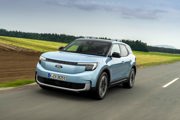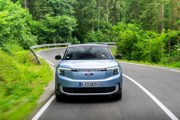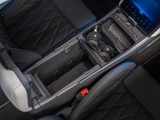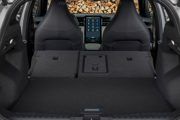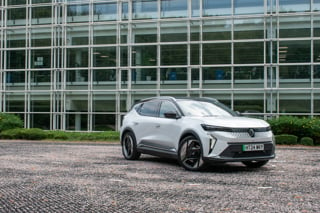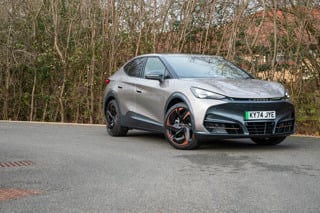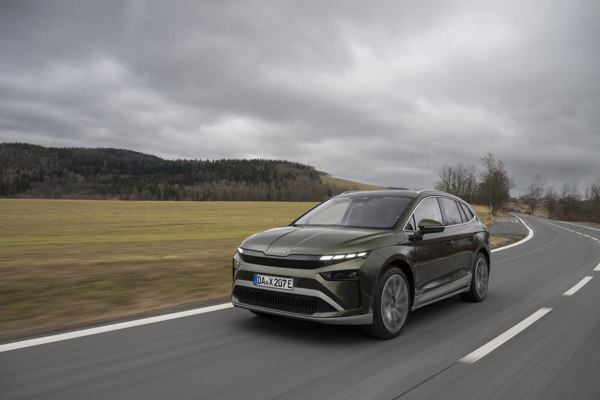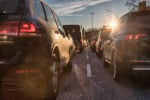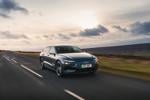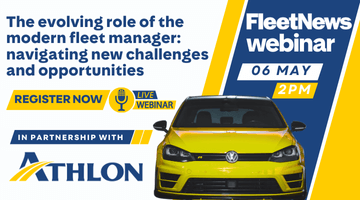Review
While most passenger car manufacturers have forged ahead with their transition to battery electric vehicles, Ford has been somewhat late to the party. Until the introduction of the Explorer, its zero-emission car offering consisted of just the Mustang Mach-E. However, its new SUV has been worth the wait, combining Ford’s renowned driving dynamics with a range of up to 374 miles, decent practicality and a rugged SUV bodystyle.
Overview
Ford’s second battery electric car has been a long time in the making: although it shares the same MEB architecture as models such as the Volkswagen ID 4 thanks to a tie-up with the Volkswagen Group, Explorer’s launch was delayed further as the manufacturer opted to wait an extra nine months for newer battery technology.
However, it is finally here and – bar a few tiny clues in the cabin – Ford has made an excellent job of hiding its roots.
At launch, two powertrains are available: a single-motor rear-wheel drive variant with an 77kWh (usable) battery for a WLTP range of 374 miles, and a twin-motor all-wheel drive option with a range of 329 miles from a 79kWh (usable) battery.
Pricing for the current models - both described as Extended Range - starts at almost £46,000. Later this year Ford will open orders for a lower cost Standard Range variant, which will be single-motor rear-wheel drive and use a 52kWh (usable) battery.
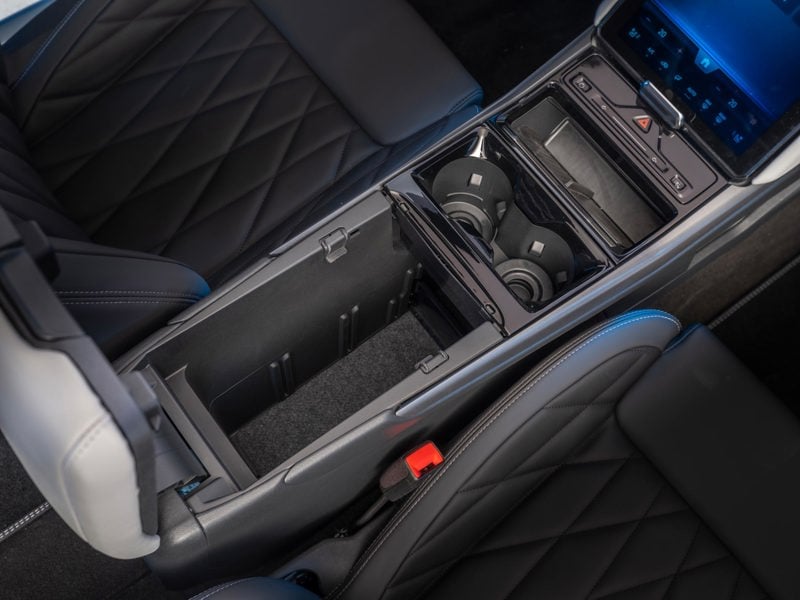
Comfort and practicality
Both comfort and practicality are key attributes for any family SUV, and the Explorer impresses in both areas: it is just 2cm longer than a Focus, but offers the room usually found in a vehicle from the class above.
Front and rear seat passengers are well catered for, with the amount of leg room in the back particularly impressive.
The cabin feels spacious and airy: this is aided by the windows in the C-pillars, which from the outside appear to be solid.
There is also masses of storage space in the cabin. As well as the usual door bins and cup holders, the storage bin between the front seats (Ford calls it the ‘Megaconsole’) can take an impressive 17 litres of cargo, while the infotainment touchscreen can slide up and down to provide access to a hidden – and lockable -compartment. This is also where two USB ports are found.
There are also visible signs of Ford’s partnership with Volkswagen Group in the cabin: The driver display unit is familiar, while the electric window switches on the front doors and haptic buttons on the steering wheel are shared.
However, it is unlikely the majority of potential customers will either notice – or care – and those aside, Ford has done a good job of giving Explorer its own, distinct interior.
The rear seats offer a 60/40 split, with the boot offering a capacity of 445 litres with them in place.
Safety and technology
For all of its smart design and the soundbar above the driver display, the cabin is dominated by the centrally-mounted 14.6-inch infotainment touchscreen.
As already mentioned in the previous section, the screen can be raised and lowered (through an arc of 30 degrees), and as well as exposing the compartment, this allows the driver to adjust it into a position which suits them.
The screen resolution is crisp, but the interface is not always simple to navigate. The icons are a little on the small size, so requires a certain amount of focus to operate: not something a driver wants to do while on the move.
However, it does offer customisation options to allow drivers to pin shortcuts to their most-used functions to the system’s home page.
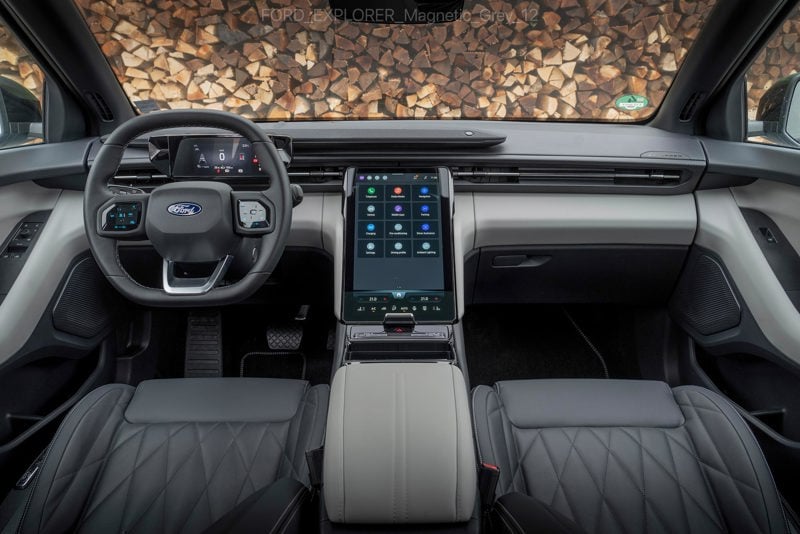
Standard equipment levels are high. Select trim includes 19-inch alloy wheels, heated front seats (driver seat has massage function) and steering wheel, and wireless phone charging.
Premium adds a 10-speaker B&O sound system, while the headlights are upgraded from LED with auto high beam to dynamic matrix LED with glare-free high beam.
Optional extras are limited to a panorama roof and a driver assist pack. The pack includes a hands-free tailgate, a head-up display, 360-degree camera and assisted lane change technology.
Explorer comes with more than 15 driver assist technologies as standard, including intelligent adaptive cruise control with stop and go, as well as Clear Exit Warning that is designed to prevent occupants opening their door in the path of cyclists.
Driveability and efficiency
Ford has built up a deserved reputation for building cars which are great to drive, and that know-how is obvious with the Explorer.
Although it shares many underpinnings with VW Group models, Ford has made a number of changes including tweaks to the suspension system, the electronic stability control (ECS) and fitted specially-designed tyres.
The end result is good: it doesn’t hit the same heights as the Fiesta or Focus when it comes to driving dynamics, but for an electric SUV it is impressively agile, the steering is precise and it rides really well.
Refinement is high, with wind and road noise barely perceptible on most of the test route we drove it on.
Both powertrain choices have a good turn of speed: the RWD model, which has a 286PS motor, accelerates from 0-62mph in 6.4 seconds. The AWD models are even quicker: powered by a 340 motor, it covers the sprint in 5.3 seconds.

During the test, we achieved efficiency of 3.63 miles per kWh in the RWD model which included some brisk driving, which suggests a real-world range of more than 300 miles is easily achievable.
The rear-wheel drive model is equipped with a 135kW onboard DC charger, and takes 28 minutes to go from 10-80%. It can charge at speeds of up to 11kW from an AC charger, which means it can go from empty to full in just over 11 hours.
The AWD variants can be charged at up to 185kW from an appropriate DC charger, with Ford saying this will take approximately 26 minutes to go from 10-80%. They also have an 11kW AC on-board unit.
Company car tax and running costs
The current Explorer range starts with the Select RWD model, which sits in the 2% benefit-in-kind tax band for 2024/25. With a P11d value of £45,820, a 20% taxpayer faces a monthly company car tax bill of £14.
Over a four-year/80,000-mile cycle, it has a running cost of 50.30ppm (depreciation 35.91ppm, SMR 4.63ppm and fuel 9.84ppm) for a total running cost of £40,301 per cycle.
The same driver choosing the range-topping AWD Premium model (P11D price: £52,920) will pay £18 a month in BIK.
Over the same cycle, this has a running cost of 60.31ppm (depreciation 43.84ppm, SMR 4.71pm and fuel 11.75ppm), for a total running cost of £48,244 per cycle.
Specs
| Manufacturer | Ford |
| Model | Explorer Electric Estate |
| Specification | Ford Explorer Electric Estate 210kW Premium 77kWh 5dr Auto |
| Model Year | 2024.00 |
| Annual VED (Road tax) | £10 |
| BIK List Price | £49,920 |
| Range | 354.00mile(s) |
| CO2 | N/A |
| BIK Percentage | 2% |
| Insurance Group | N/A |
| CC | 1 |
| Fuel Type | Electric |
| Vehicle Type | Medium SUV |
| Luggage capacity (Seats up) | 445litres |
| Doors | 5 |
Running Costs
| P11D | £49,920 |
| Cost per mile | 55.66ppm |
| Residual value | £20,575 |
| Insurance group | N/A |
| Fuel Type | Electric |
| Cost per mile | 191.46ppm |
| Fuel | 2.23ppm |
| Depreciation | 187.00ppm |
| Service maintenance and repair | 2.23ppm |
Rivals
Info at a glance
-
P11D Price
£49,920
-
MPG
N/A (WLTP) -
CO2 Emissions
N/A -
BIK %
2% -
Running cost
3 Year 60k : £20,575 4 Year 80k : £16,750 -
Fuel Type
Electric -
Range
354.00mile(s)




